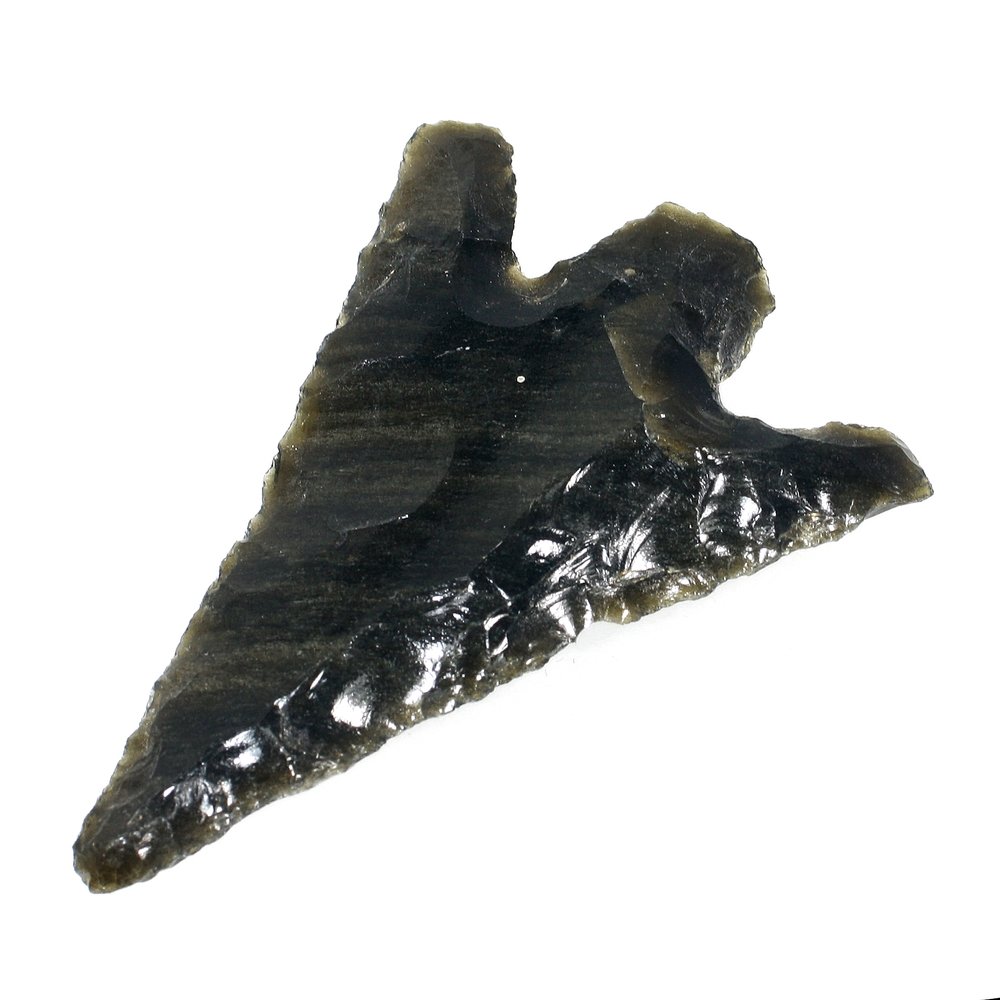

The actual name “Obsidian” was first used by Pliny the Elder (CE23-79) who named it after a Roman citizen/explorer, Obsius, who “discovered” it in Ethiopia. In Egypt, Obsidian knives were used for ceremonial circumcisions, as well as to make mirrors and various decorative objects found in tombs. Try it in combination with PeridotĪt the dawn of human civilization and writing, we know that Obsidian was definitely being used for ritual purposes. It is thought that the different colors are due to differing cooling rates of the molten lava.īlack Obsidian ’s energy works well with its “friends” – crystal associates formed in the same geological environment. Rainbow Obsidian and Red Sheen have a similar iridescences, but the colors actually come from nanoparticles of Magnetite.
#OBSIDIAN ARROWHEAD SERIES#
These bubbles have been stretched nearly flat in a series of layers which reflect back light with a metallic glow, such as Gold Sheen and Silver Sheen. This effect is usually created by small inclusions of waver vapor bubbles trapped in the glass.

Rare forms of Obsidian have a colorful sheen that appears when moved in the light. Obsidian is typically jet black, however the inclusion of various minerals can create opaque colored varieties such Mahogany (red and black) or Snowflake (white and black). It is sometimes referred as “volcanic glass” due to its glass-like texture. Obsidian is formed when lava from a volcanic explosion solidifies so quickly that there is no time for mineral crystals to grow within it. It has been used in shamanic rituals to “cut away” diseases and disorders from the physical and etheric bodies. It is particularly helpful for healing injuries that have been self-afflicted. Often used by metaphysical healers to help relieve pain and tension throughout the body. There is help out there, so be brave and reach out.Īway from the shadows, Black Obsidian helps us to face the truth It reminds us that there is a strong link between worlds and that when the mind-body connection is accessed, miracles are possible. Black Obsidian bluntly tells us that we don’t have to suffer alone or in silence. Black Obsidian supports us when we are feeling overwhelmed with pain, it offers comfort and encourages us to behave in a healthy way, even though our instinct might be to turn destructive.

The urge to self-harm is often linked to mental distress and the immense desire to find relief. Black Obsidian is also recommended for anyone who has a history for self-harming. It is an ideal stone when faced with an emotionally-intense situation, it helps us accept what is happened, prioritize what needs to happen next, and to get it done. It pushes us to think very practically rather than emotionally. For most people, however, it is more useful as a talisman for grounding back into the body. Black Obsidian is a powerful shamanic tool that has been used for centuries to “cut away” diseases and disorders trapped in the physical and etheric bodies.


 0 kommentar(er)
0 kommentar(er)
